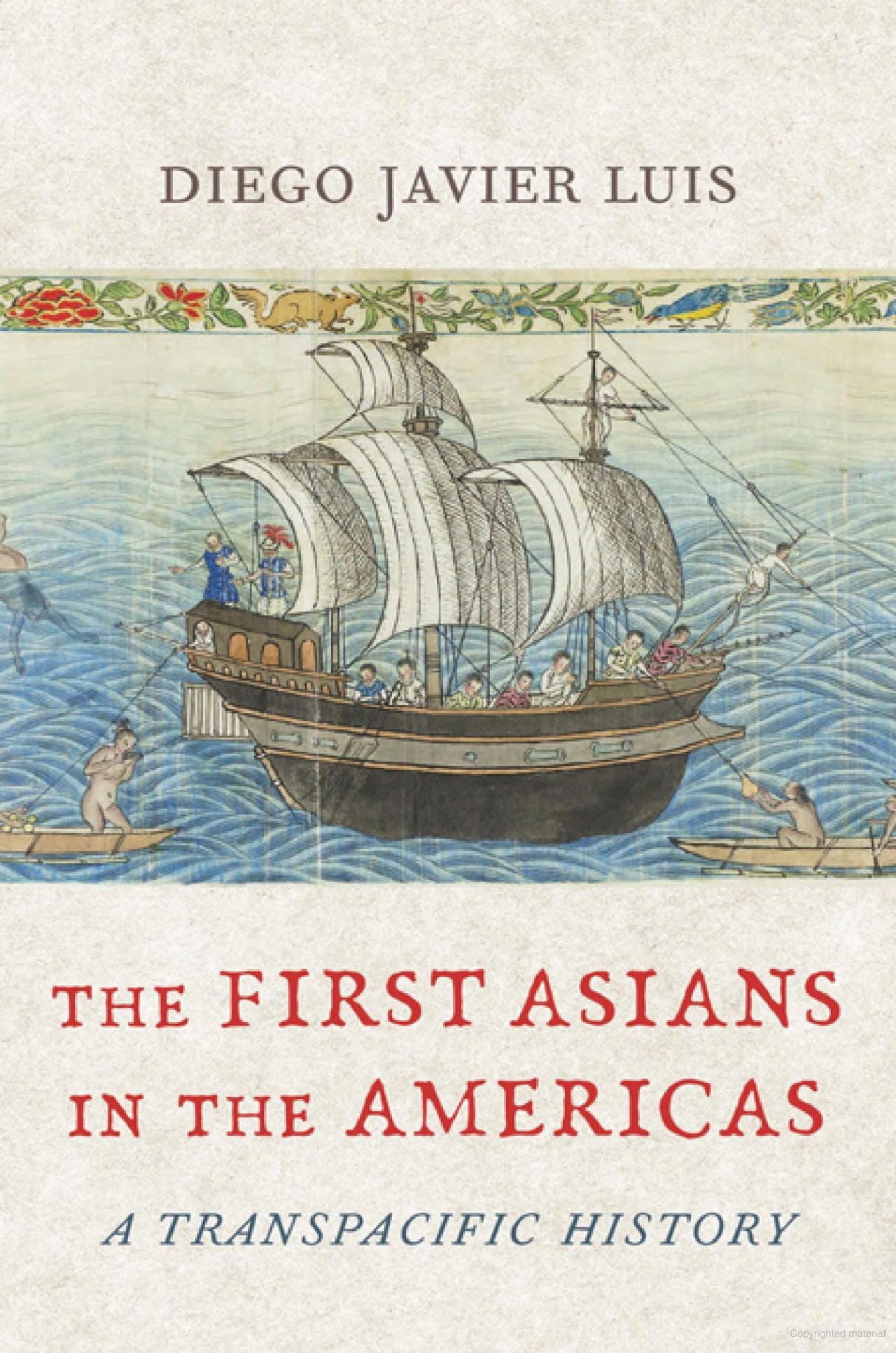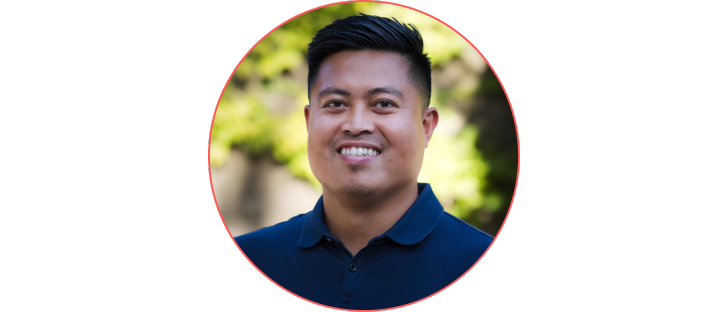Asian Migration to the Americas and Their Essential Role in Shaping Colonial America
Book Review of "The First Asians in the Americas: A Transpacific History" by Diego Javier Luis
The First Asians in the Americas: A Transpacific History
Diego Javier Luis
Cambridge, MA: Harvard University Press, 2024. $45.00
“Raising historical consciousness among our communities empowers leaders in pastoral ministry”
In The First Asians in the Americas: A Transpacific History, Juan Diego Luis, a historian specializing in the connections between Mexico and the Philippines during the Manila galleon period, presents a chronological intervention in the long history of Asian migration to the Western Hemisphere. Spanning from the late sixteenth to early nineteenth centuries, this work restores the significance of the Pacific in the history of colonial Latin America, a field traditionally focused on the Atlantic. Luis introduces a new chronology that predates the conventional narratives of Asian migration in the Western Hemisphere, challenging the migration history that traditionally begins in the nineteenth century. As a Filipino American, I personally resonate with Luis’ work because it offers expansive insights into a history largely overlooked and often disregarded for my racial ethnic community.
Luis presents a compelling argument that the first Asians to arrive in the Americas traveled on Spanish galleons between Manila, Philippines and Acapulco, Mexico, during the mid-sixteenth century. These early Asian migrants, often enslaved, were largely from diverse origins across Asia. This includes people from China, Japan, India, and the Philippines, experiencing a unique social adaptation and cultural convergence within the Spanish colonial system.
Despite their varied ethnicities, they were frequently categorized as “Chinos,” leading to a complex racialized experience in the Americas.
The Pacific World and Asian mobility played a pivotal role in shaping daily life during colonial Mexico and beyond. These spheres were intricately interconnected politically, economically, and socially. Individuals within these global colonial contexts actively contributed to the coherence of this world by making choices that shaped their lives and created new realities, imaginaries, and identities. Luis’s work aims to restore the human element to expansive yet vacuous imperial imaginaries. By relying heavily on the methodologies of global microhistory, which focuses on the stories of highly mobile individuals, Luis seeks to challenge the Eurocentrism of traditional global histories and offer a more nuanced understanding of Asian American origins and their connections to Latin American history.
In challenging Eurocentric presentations of history, Luis delves into the complex relationships between diverse subject peoples, while also shedding light on the history of resistance and solidarity. One example of complex relationships was during the 1603 Sangley Massacre where the Spanish ruling powers enlisted indigenous Filipino reinforcements to aid in the brutal massacre of the Chinese merchant community, effectively driving the remaining “Sangleys” out of Manila. This event highlights the ways in which dominant powers pit subject peoples against one another to achieve their objectives. The post-transpacific migration setting, however, offers examples of solidarity and resistance between these communities as well as with other racialized groups. Within the reading, Luis presents enslaved Asians not as mere subjects to larger colonial powers, but rather as people with agency. Luis asserts that “bondage did not preclude agency… we should begin from the assumption that there was an intellectual life within slave communities, and that this life involved movement between ideas and action, between the abstract and the particular, between past, present, and future” (141). Luis further emphasizes that enslaved people not only reconstituted families but also forged new identities, conjured up creative imaginaries, fomented resistance, and engaged in political activism. The collective oppression and resistance they faced fostered social intimacies and cultural exchanges between Afro-Mexican and Indigenous communities. This insightful perspective underscores the significance of presenting history from the perspective of marginalized groups and highlights the importance of modern liberation movements in fostering solidarity among themselves and striving for collective liberation, while also being aware of the insidious tactics employed by dominant powers that pit subject peoples against each other.
As a Filipino American, I believe Luis’ work is crucial in comprehending the complete history of Filipino migration to the Americas, in all its complexity. Learning our respective histories is vital for identity formation and raising the consciousness of a community that often struggles with internalizing the narratives imposed by the dominant culture, narratives that elevate imperial powers as heroes in civilizing a “primitive” people, which reinforce a colonial mentality and diminish one’s sense of agency. The First Asians in the Americas asserts that the long history of Asian migration to the Western Hemisphere is, in fact, American history. Luis’ historical construction continues the project of establishing “Asian America” and fostering political consciousness among Asian Americans, a movement initiated during the Third World Liberation Front of the late 1960s, where many Asian Americans expressed broad solidarity with all oppressed peoples against “the twin chains of Babylon”—racism and imperialism.
Within the Asian American Christian context, raising historical consciousness among our communities empowers leaders in pastoral ministry to develop more contextualized ministries, ministries that create sacred spaces that address the unique needs of our communities, which then foster healing and empowerment. For many Filipino American Christians grappling with internalized racism, these sacred spaces provide counternarratives to dominant imperial narratives that devalue our Filipino heritage. A comprehensive understanding of history is essential for comprehending our present realities, which then enriches the lens in which we envision our future. Integrating this framework with the biblical hope of holistic shalom cultivates a sense of agency and offers an invitation to participate in ushering in God’s justice and healing in our world.
In The First Asians in the Americas, Juan Diego Luis presents profound insights into a history that has largely been disregarded. The search for the first Asians in the Americas, however, should not conclude with a mere examination of the extensive historical archives scattered across various continents. Rather, as Luis notes, this quest should compel us to look inwardly, stimulating a new historical consciousness, “one that is sensitive to silences, empathetic toward difference, and radical in its pursuit of new ways of being in the world.” This book would undoubtedly be valuable for individuals interested in learning about Asian American history or exploring their own cultural heritage.
Takeaways:
Asian Migration Predates Common Narratives
Asians first arrived in the Americas during the 1500s on Manila galleons, challenging the idea that Asian migration began in the 19th century.Agency Within Enslavement
Enslaved Asians in colonial Latin America shaped their lives by forming families, creating identities, resisting oppression, and engaging in activism.Tension and Solidarity Among Groups
Colonial systems often pitted Asians, Afro-Mexicans, and Indigenous peoples against each other, yet these groups also forged alliances and shared cultures.Reclaiming Filipino Identity
For Filipino Americans, this history provides a way to reclaim cultural pride, challenge colonial narratives, and understand their role in the Americas.Historical Awareness for Justice
Understanding this history fosters solidarity, empowering Asian Americans and faith communities to address injustice and create spaces for healing.
Luis, Diego Javier. The First Asians in the Americas: A Transpacific History. Cambridge, MA: Harvard University Press, 2024.
Additional resources:
Diego Javier Luiz, Ph.D. Homepage
Diego Javier Luiz’s Podcast: The Historian's Table







